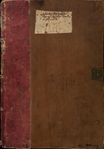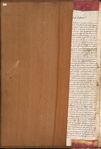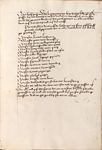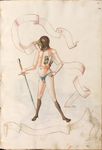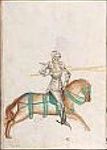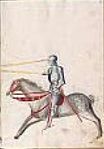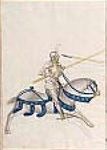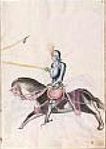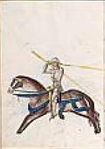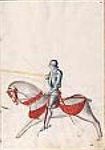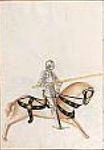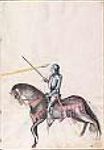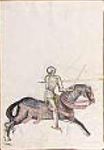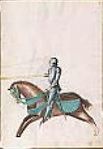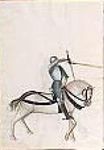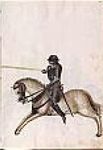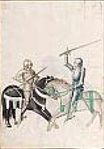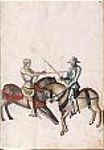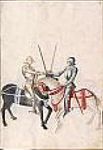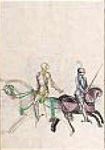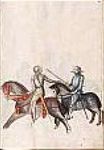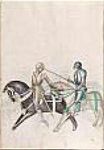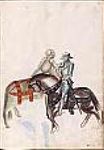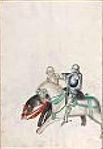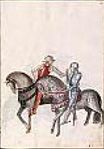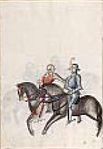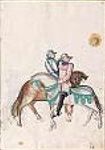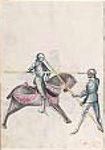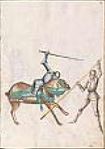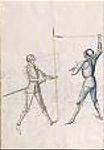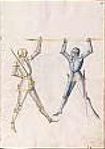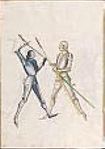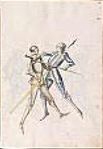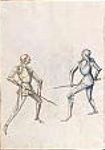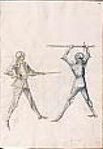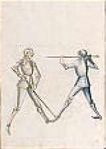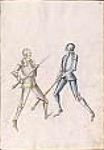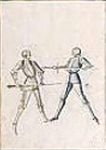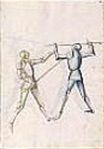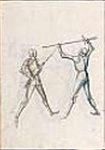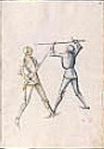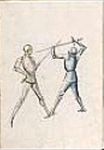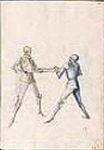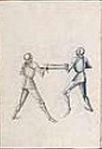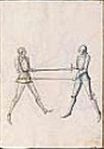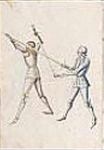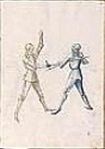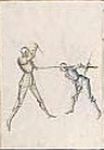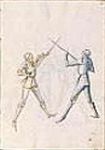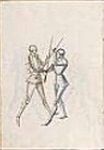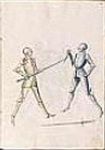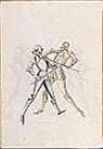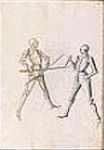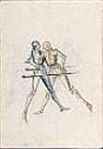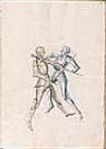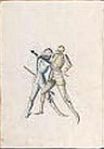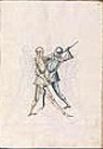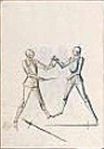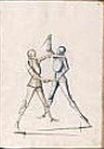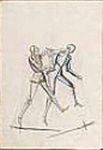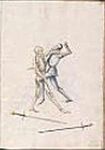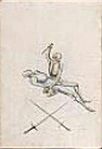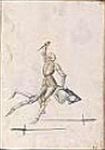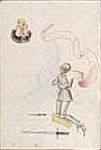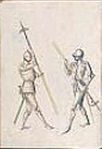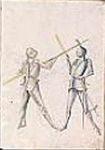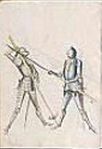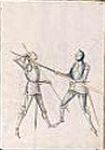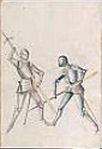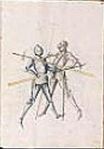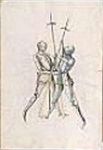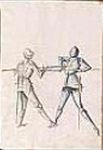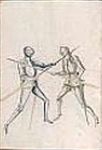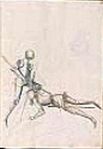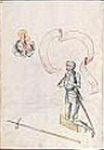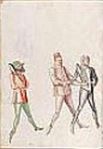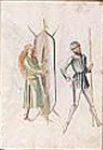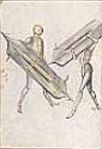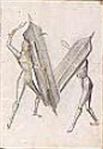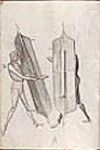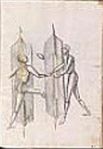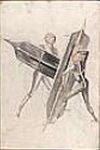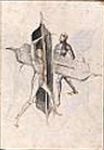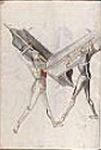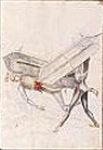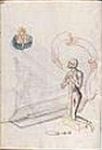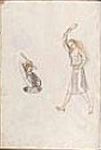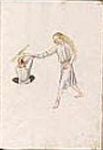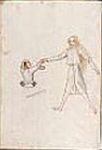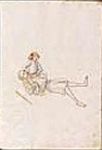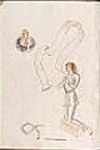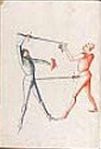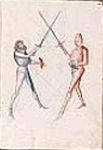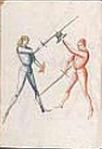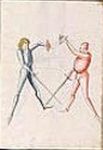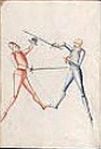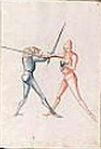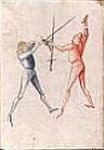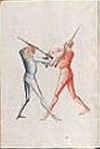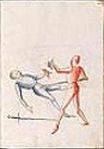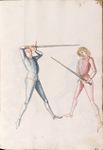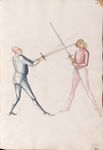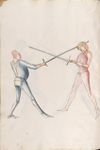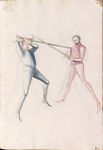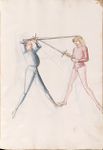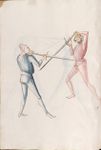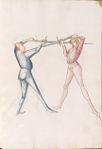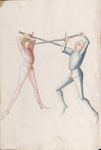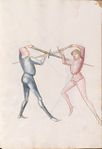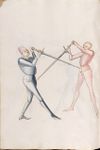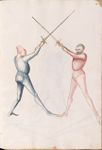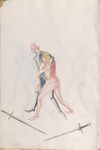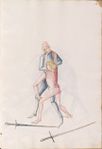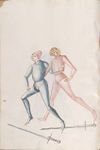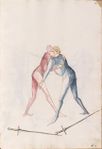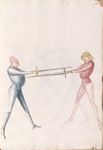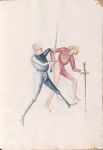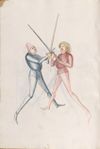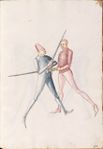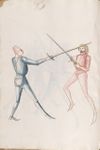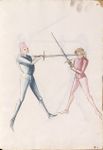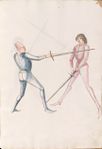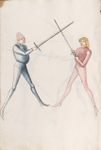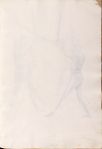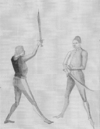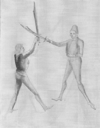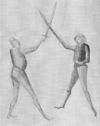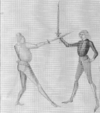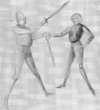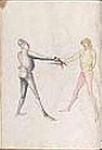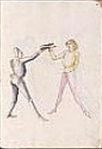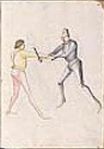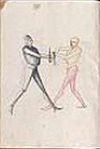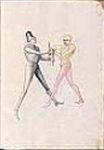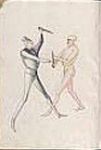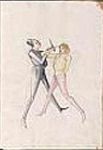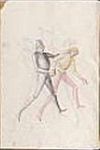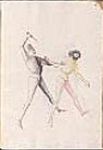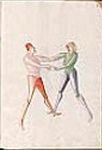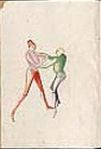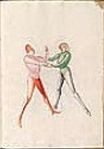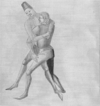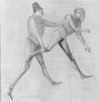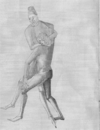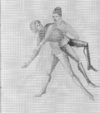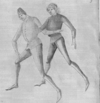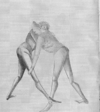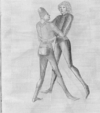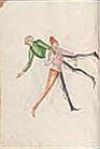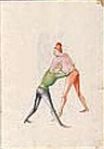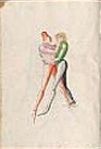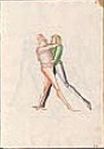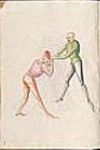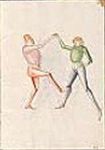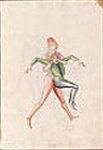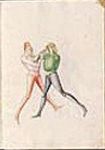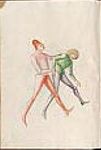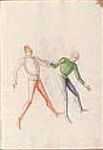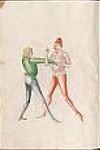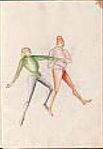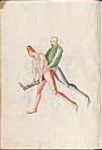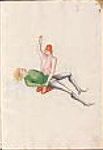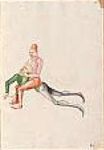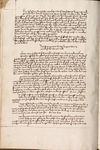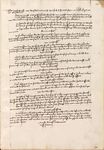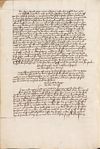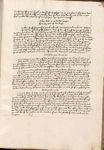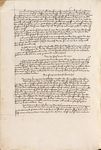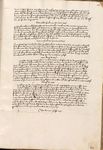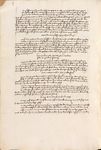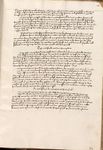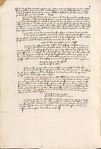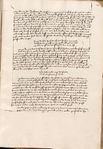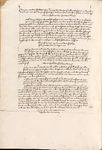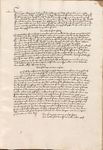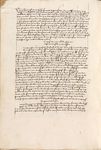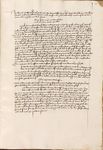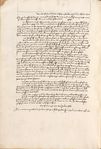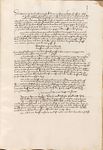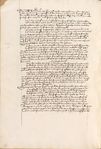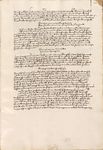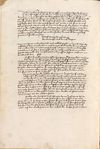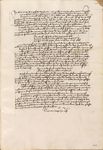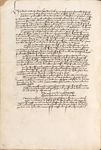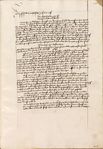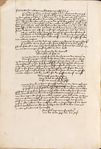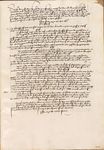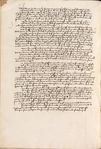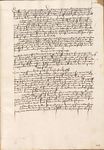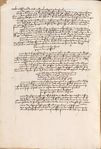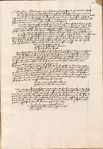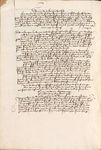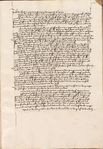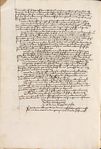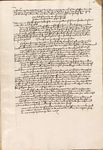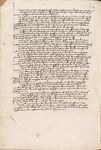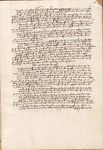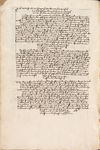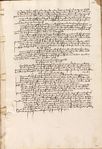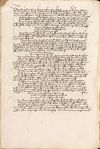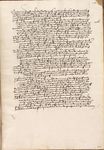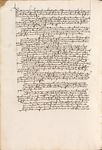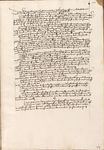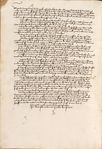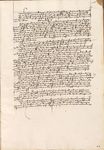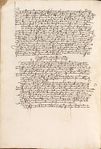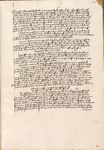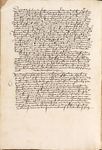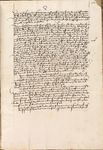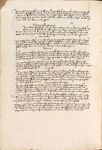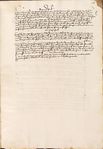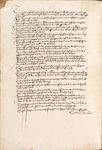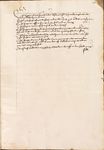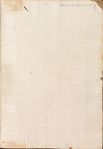|
|
| Line 32: |
Line 32: |
| | <!----------Form and content----------> | | <!----------Form and content----------> |
| | | Material = Paper, in a wood and leather <br/>binding | | | Material = Paper, in a wood and leather <br/>binding |
| − | | Size = 173 [[folia]] | + | | Size = 129 [[folia]] |
| | | Format = Double-sided; one uncaptioned<br/>illustration per side (ff 1r-100r),<br/>unillustrated (ff 104v-129r) | | | Format = Double-sided; one uncaptioned<br/>illustration per side (ff 1r-100r),<br/>unillustrated (ff 104v-129r) |
| | | Condition = | | | Condition = |
Revision as of 02:59, 3 March 2014
| Paulus Kal Fechtbuch |
|---|
MS KK5126, Kunsthistorisches Museum
Vienna, Austria |
325px
First image, fol. 10r |
|
|
| Type |
|
|---|
| Date |
ca. 1480s |
|---|
| Language(s) |
Early New High German |
|---|
| Author(s) |
|
|---|
| Compiler |
Unknown |
|---|
| Illustrator(s) |
Unknown |
|---|
| Material |
Paper, in a wood and leather
binding |
|---|
| Size |
129 folia |
|---|
| Format |
Double-sided; one uncaptioned
illustration per side (ff 1r-100r),
unillustrated (ff 104v-129r) |
|---|
| Script |
Bastarda |
|---|
| Exemplar(s) |
Cgm 1507 (ca. 1470) |
|---|
| Treatise scans |
Digital scans (thumbs) |
|---|
Allerley Kampf zur Roß und Fueß in und an Harnisch ("All Manner of Combat on Horse and on Foot, Both Armored and Unarmored", MS KK5126) is a German fencing manual probably created in the 1480s.[citation needed] The original currently rests in the holdings of the Kunsthistorisches Museum in Vienna, Austria. Though Paulus Kal was in the service of Archduke Sigismund of Austria at the time that this manuscript was likely created, it bears no dedication; it may be that it was created by Kal as a revised and expanded version of his earlier works for his own personal use.[1]
Kal's treatise consists of a partial redaction of the writings of Johannes Liechtenauer on Kampffechten, Roßfechten, and Bloßfechten, as well as Kal's own teachings on a variety of other weapons. It differs from the works of other followers of Liechtenauer in that instead of offering extensive glosses of the high master's verses, Kal explains them with detailed illustrations. Unlike the earlier manuscripts containing Kal's works, this is a much larger compilation incorporating material from several other masters within the tradition of Johannes Liechtenauer. At the same time, the text of Kal's own work is omitted and the art is somewhat inferior to that of the Cgm 1507.[2]
Provanance
Contents
| Folio
|
Section
|
| 1r - 9v
|
Blank pages
|
| 10r
|
Illustration of animal virtues from Paulus Kal's treatise
|
| 10v - 23r
|
Roßfechten illustrations from Paulus Kal's treatise
|
| 23v - 40v
|
Kampffechten illustrations from Paulus Kal's treatise
|
| 41v - 46v
|
Armored poleaxe illustrations from Paulus Kal's treatise
|
| 47v - 52v
|
Longshield illustrations from Paulus Kal's treatise
|
| 53v - 55v
|
Duel between a man and a woman from Paulus Kal's treatise
|
| 56v - 61r
|
Sword and buckler illustrations from Paulus Kal's treatise
|
| 62r - 75v
|
Bloßfechten illustrations from Paulus Kal's treatise
|
| 76v - 79v
|
Messer illustrations from Paulus Kal's treatise
|
| 80v - 85r
|
Dagger illustrations from Paulus Kal's treatise
|
| 86r - 100r
|
Grappling illustrations from Paulus Kal's treatise
|
| 104v - 106r
|
Epitome by Johannes Liechtenauer
|
| 106r - 114r
|
Gloss of Liechtenauer's Bloßfechten by Pseudo-Peter von Danzig
|
| 114r - 117v
|
Gloss of Liechtenauer's Roßfechten by Pseudo-Peter von Danzig
|
| 117v - 122v
|
Gloss of Liechtenauer's Kampffechten by Pseudo-Peter von Danzig
|
| 122v - 124v
|
Grappling by Ott Jud
|
| 124v - 125v
|
Armored fencing by Martin Huntfeltz
|
| 125v - 126r
|
Armored grappling by Martin Huntfeltz
|
| 126r - 127r
|
Mounted fencing by Martin Huntfeltz
|
| 127r
|
| English Translation
by Roger Norling
|
Transcription
by Carsten Lorbeer, Julia Lorbeer,
Andreas Meier, Marita Wiedner
|
|
|
[127r] Jtem also schik dich mit der streyt agkst zu vecht[e]n lern obenn vnd vndenn anpindenn als mit der stanngenn
|
|
|
Jtem in das erst stuck schick dich also helt er denn hamer vbersich so halt dw denn dumen vnter sich bey deinem tennckenn pain twerchs ann den leyb slecht er vonn dach so versecz mit dem vndern tail der agst oben od[er] lass fur gen den Straich vnnd hennckelsu mit der agst in der rechtenn chnypüg vnnd zuck in nyder
|
|
|
J[t]em wil er dir das ober stuck chun[1] vnd wil dich henngeln legt er dir denn hackenn an so slach mit deiner achst inen an sein achst vnnd leg inen wider ann sein pain vnd ruck als obenn geschribenn stet
|
|
|
Jtem ob er das obgeschribenn stuck pricht so secz im an mit der agst[en] vnd wind im auf vnd nym das ober reyssenn bey dem hals vnd secz im in vb[er][2] das tennck pain hinder an das recht oder das recht pain das gelinck vnd wurff das stuck get zw baidenn seytenn
|
| Item: Binds he together with both your hammers held high and strikes as a peasant, so feel/sense and act as if you wish to displace and let his strike pass through, so you have your handle by the neck or a free (unobstructed) strike at the head, the shoulder or the arm.
|
jtem pint er dir ann das paid hamer obenn stennd vnd slecht peẅrleins so enpfind vnd thue als wild dw verseczenn vnd lass sein chlag fur genn so hastu das hennckeln pey dem nackenn oder frey sleg zw dem chopf zw der achsel zw dem arm
|
|
|
Jtem slecht er mit ein zw gleich ein slag vnd wil dir dy voder hant ledigmachenn so gib nach vnd nym im die sein als er dir mit der agkst secz er dir dar inen an wie er dir anseczt also secz im auch ann vnd lenng dein agkst also zuck das tennck pain hindersich vnd secz dein agkst an dein rechte seytenn so hast dw in vberlenngt
|
|
|
Jtm schick dein agkst twerchs nach dem leyb das der ha / mer vnttersich sey vnd thue als wild dw mit dem obernn ort verseczenn wild vnd suech den vnttern rist slecht er aber weyt ein her so suech dy ploss inder hand oder vnder dem vechsen vnd secz im an
|
|
|
Jtm schick dich als in dem oben geschrib[e]n stuck vnd versecz mit dem obernn ort so hilft er dir an der ain seytenn zw allen sleg[e]n vnd die stuck genn als hilprantz haw in dem langenn swert in allen pfinden vnd jndes get in der agkst als wol als in anndern wern
|
|
|
Notes:
^ 1. Es ist wahrscheinlich thun gemeint.
^ 2. Am rechten Rand.
|
|
| 127r - 127v
|
| English Translation
by Christian Henry Tobler
|
Transcription
by Carsten Lorbeer, Julia Lorbeer,
Andreas Meier, Marita Wiedner
|
| Item, do thus with the long shield: learn to deliver the Oberhau and Unterhau and learn to bind well below and above, and in the techniques described hereafter you will learn the side wrenching.
|
[127r] Jtem also schick dich in dem lanngen schilt lern im anfang den ober[e]n vnd denn vntern haw vnd vntten vnd oben[3] wol lernst an pintn vnd in denn her nach geschribenn stuckenn wirstu lernnen die seytenn reysenn
|
| Item, do thus the first technique behind the shield if you have a sword or mace: if you have a sword strike whatever opening you see; or cast [the mace] and call your marshal to give you another mace.
|
Jtem das erst stuck schick dich hinder den schilt also dastu ein swert oder kolb[e]m hast dw ein swert wo dw in plossenn sichst so slach oder wurf da hin vnd Hays dir deinen grieswartl ein anndern cholbenn gebn
|
| Item, do this with the shield and with mace near to him and shoot with the point of the mace to his shield’s barb [?] so that he must expose himself; immediately strike or thrust.
|
[J]tem schick dich mit dem schilt vnd mit dem cholben nachet zw im vnd sch //eub mit dem ort vom cholben auf sein parcz schilcz so magstu in plos Jndes slach oder stich
|
| Item, do this nearer to him and step with a foot on a point of his shield so that he is completely exposed, then strike to lame the wrist.
|
Jtem schick dich mer nachet zw im vnd drit mit ainem fues an ein ortt seins schilcz also wirt er ganncz plos so slach nach dem lem zw denn glidernn
|
| Item, if you have used all of your maces, and stand freely with the shield and he also stands freely with his shield, see if you can go under his shield by the point and wrench it toward you, then take it and quickly cast it from you and work with your shield.
|
Jtem ob dw die cholben al vernuczest vnd dw frey mit dem schilt stuenst vnd er auch frey mit dem seinen stet so besich ob dw im sein schilt vnder gen mochst bey dem ort vnd reys vrbering an dich so nymbstu ymen wurff von dir pald vnd arbait mit deinen schilt
|
| Item, if you have no mace and he has none then wind against him and note, as you thrust, the feeling; this is called ‘finding’ or ‘weak and strong’.
|
Jtem hastu chain cholb[e]n vnd er chain so wint mit im auf vnd merck auf die stoss im fullenn das in an haist den pfindenn oder swech vnd sterck
|
| Item, if you have come from the mace and shield, then remember the “murder grips”: with the bottom of the feet pressing to the shin and stepping on the knee, grasping the genitals, the wrestling at the hip, the punch to the heart, the arm break, to the neck and the nose, to the eyes, under the ears, or the Sun Pointer.
|
[127v] Jtem ob dw chumbst von cholbenn vnd von schilt so merck auf dy mort griff bey denn fuessenn vntenn das drucken auf die schinpain treten auf die chnye griff zw denn hodenn die huff ringen die stoss zw dem herczen die armpruch zw dem hals vnd den [n]aslechern zw den augen hinder dj ornn oder das Sunen Zaigenn
|
|
|
Notes:
^ 3. n wurde aus r korrigiert.
|
|
| 127v
|
Sword and buckler by Andre Liegniczer
|
| 127v - 128r
|
Dagger by Andre Liegniczer
|
| 128v - 129r
|
| English Translation
|
Transcription
by Carsten Lorbeer, Julia Lorbeer,
Andreas Meier, Marita Wiedner
|
|
|
Tout zw dem erstn sol im sein fursprech wandel dingenn vnd alle recht die ein chempfer von rechtz wegenn habenn sol es sey warner lüsner grieswartl vnd was ein chempfer habenn sol
|
|
|
Jtem wenn er sein warn benennt so sol er fragenn wie er warnenn sol das er recht thu vnnd nicht vnrecht
|
|
|
Jtem er sol auch fragenn ob er vnd der warner wol zw dem chempfer gen müge dy weyl er an seiner rue siczt vnnd mit in ir notturfft redenn
|
|
|
Jtem er sol aber fragenn ob er ein sig gewinne oder verlornn ob er vnnd sein warner wol zw im gen mügen vnd ir noturfft wol mit ym redenn also so er wider
|
|
|
An sein rue chumbt ym chrais
|
|
|
Jtem wenn er denn grieswertel oder lusner genannt so sol er in fragenn wie er lüsen Sol das er recht thue vnnd nicht vnrecht
|
|
|
Jtem er sol auch fragenn wie er mit der stängenn thun sol das er recht thue
|
|
|
Jtem er sol auch fragenn ob ir ainer der stangenn begert wie er die vntterstossenn sol das er recht thue vnnd nicht vnrecht
|
|
|
Jtem er sol auch fragenn was die grieswertel oder lusner hornn oder sehenn wie sy das furbringen das sy recht thunn vnnd nicht vnrecht
|
|
|
Jtem er sol auch fragenn was die grieswärtl ein müetiglich sagenn als die das gesehenn oder gehort habenn ob es icht billichenn do bey beleyb
|
|
|
Jtem er sol auch fragenn ob die griswertel mit ein ander nicht stössig sein vnd nit vber ains mochten wern zw sagenn was dann dy vrtailer gesehenn oder gehort hiettenn ob es nit billichenn do peleybe das weybe leyb vnd das die auch dar vmb sagenn süllenn
|
|
|
Er sol auch fragenn es sey grieswertl oder vrtailer wie sy darvmben sagenn sullenn das sy recht thunn das man das ausfunndig[4] mach
|
|
|
Es sol auch denn chempfer frag[e]n wellicher ein anchlager sey ob er icht billich[e]n die wal vnnd die vorfart hab zu dem chrais zw siczenn mit seinem stull wo er wil
|
|
|
Er so auch denn chempfer fragenn wie manigen cholben er habenn sul vnd was er habenn sol zw dem champf
|
|
|
Er sol auch fragenn ob er ein cholbenn verwHrff der aus dem chrais chemb was recht werr
|
|
|
Er sol auch fragenn ob er ein cholbenn verwürff der im chrais be lib ob im der nicht, billichenn zw staten wider chem ob er sein begert
|
|
|
Jtem er sol fragenn ob sein grieswärtl ycht billichenn ein cholbenn bey im habenn sull oder eins begert das er im denn mocht zw pringenn das das (sic) er Recht dar ann tat vnnd nicht vnnrecht
|
|
|
Er sol fragn was aus dem chrais chem es wer an hennden am leyb an ann[5] fuessenn ain[6] schilt ann cholbenn was darvmb Recht sey
|
|
|
Er sol fragenn wie manige stanngenn er beger[e]nn sul vnd wie offt er den Sig domit v[er]lorn hab
|
|
|
Er sol fragenn ob man sy nicht billich[e]n beschauenn sul ob sy nichtz vngleichs oder vnpillichs bey in hettenn
|
|
|
Er sol auch frag[e]n ob man die schilt vnnd anndern Zeug nicht billichenn beschauen sull
|
|
|
Er sol fragn wie offt er sein zue habm sull vnnd wie lanng
|
|
|
Er sol fragenn wie er auf stenn sull zw dem champf
|
|
|
Er sol fragenn ob icht pillichenn beleyb panalenn puntten vnd artikel[e]n als die vor mit recht ertaylt sein wordenn vnd in dem puech geschribenn stenn
|
|
|
Er sol frag[e]n welcher des chambs der nyderlig wie man zw dem selbm richt[e]n sol er sol fragenn wer richtenn sull
|
|
|
Er sol fragn ob yemand steurt oder lerm[m]it mit wortten oder mit werckenn was darvmb recht sey vnnd ob man das icht billichenn verpiett vnd wie man das verpietenn sull
|
|
|
Ob auf lauff hinder dem ring geschehe ob das denn chempfernn kain schadn pring[e]n sold
|
|
|
Notes:
^ 4. i mit 2 Punkten
^ 5. aim
^ 6. ain
|
|
Gallery
Additional Resources
- Tobler, Christian Henry. In Saint George's Name: An Anthology of Medieval German Fighting Arts. Wheaton, IL: Freelance Academy Press, 2010. ISBN 978-0-9825911-1-6
- Tobler, Christian Henry. In Service of the Duke: The 15th Century Fighting Treatise of Paulus Kal. Highland Village, TX: Chivalry Bookshelf, 2006. ISBN 978-1-891448-25-0
References

